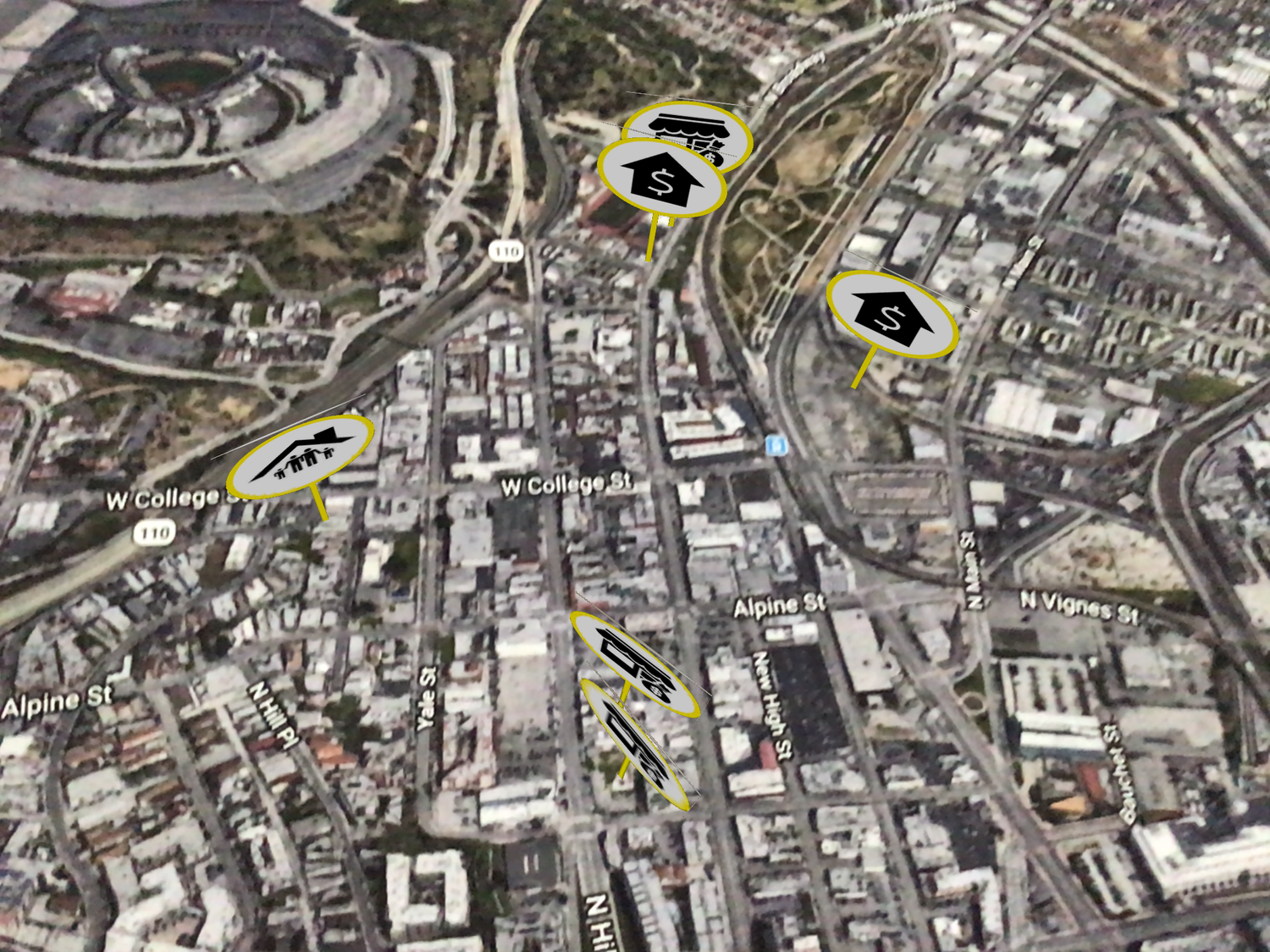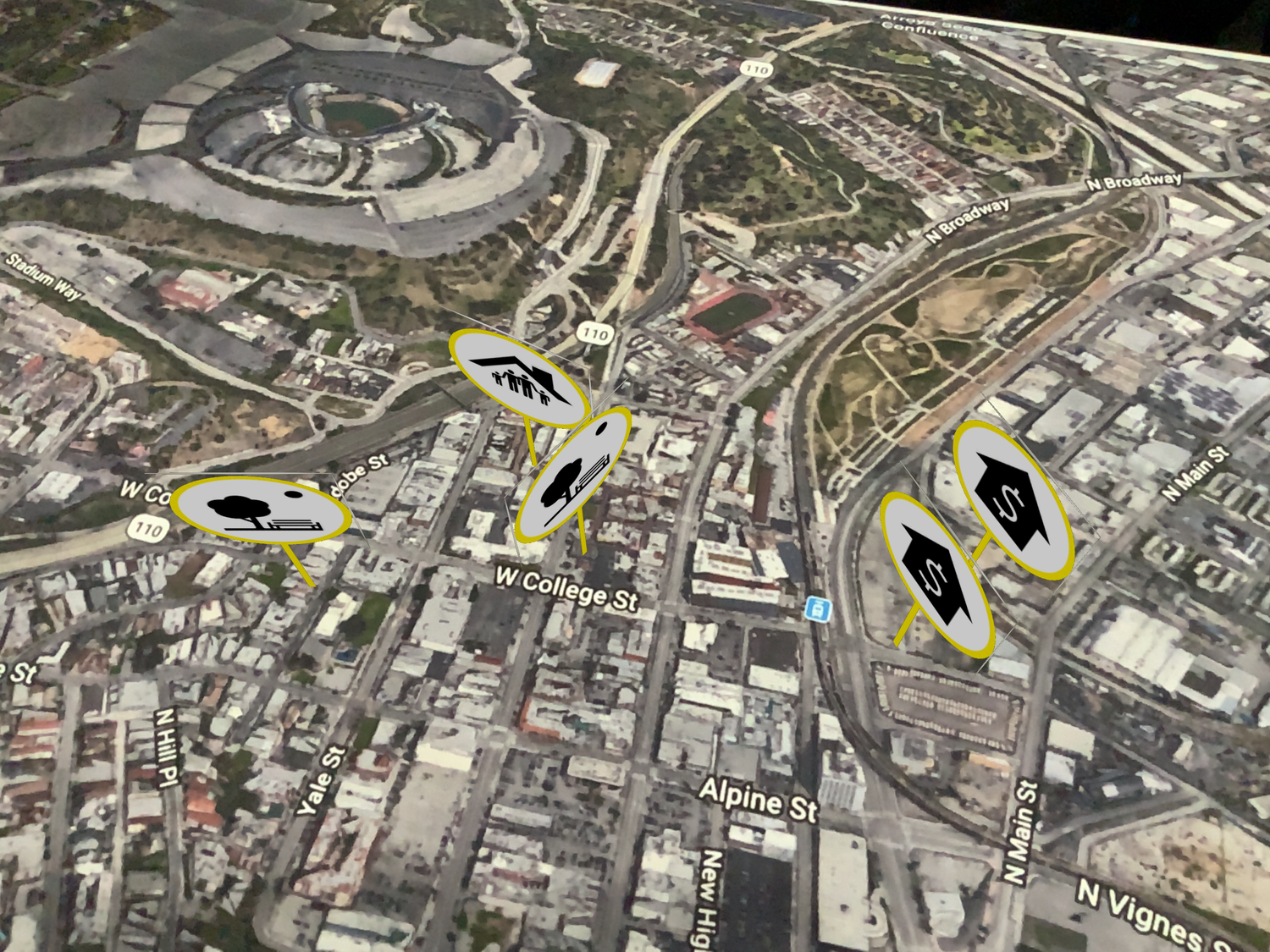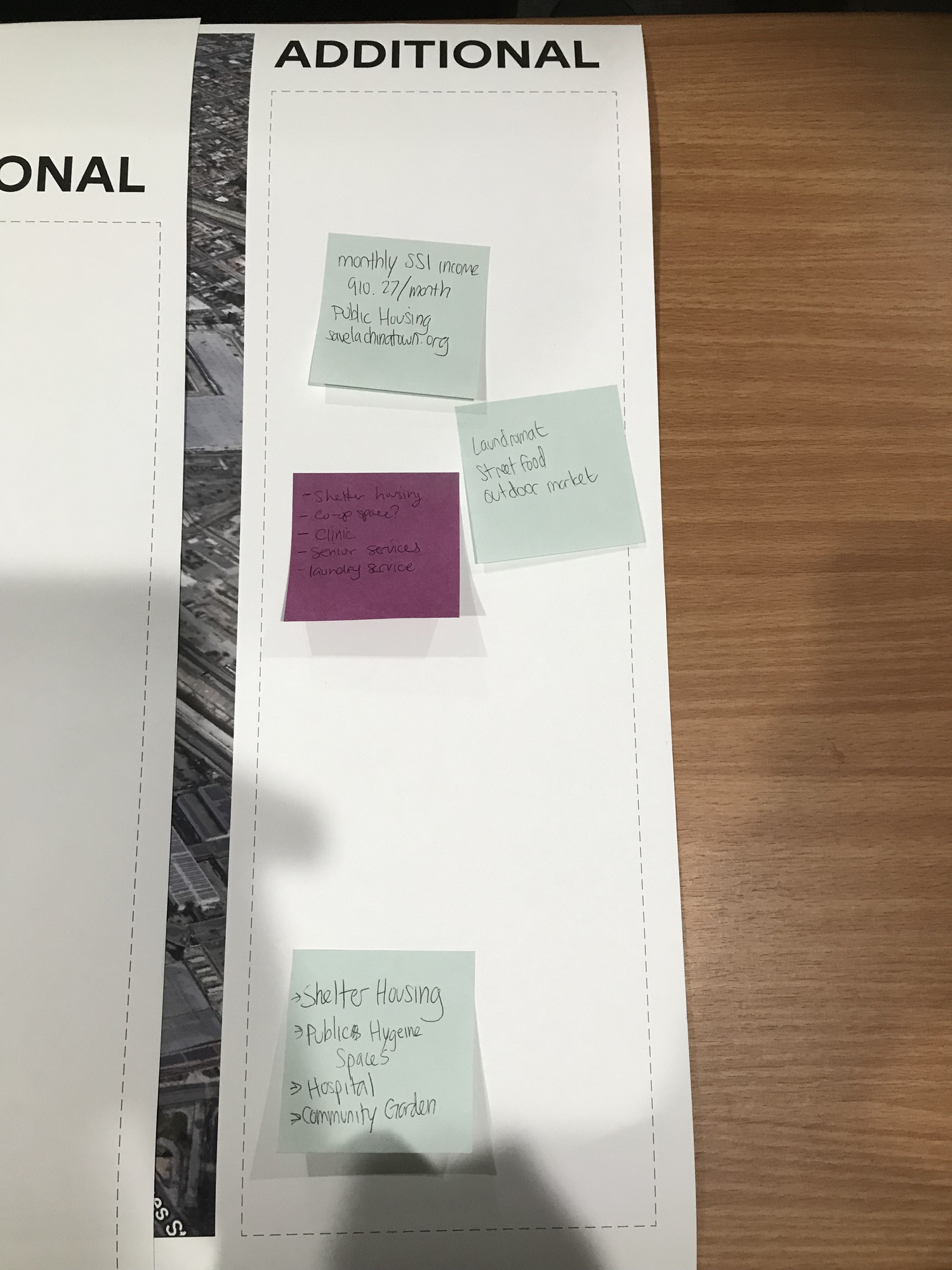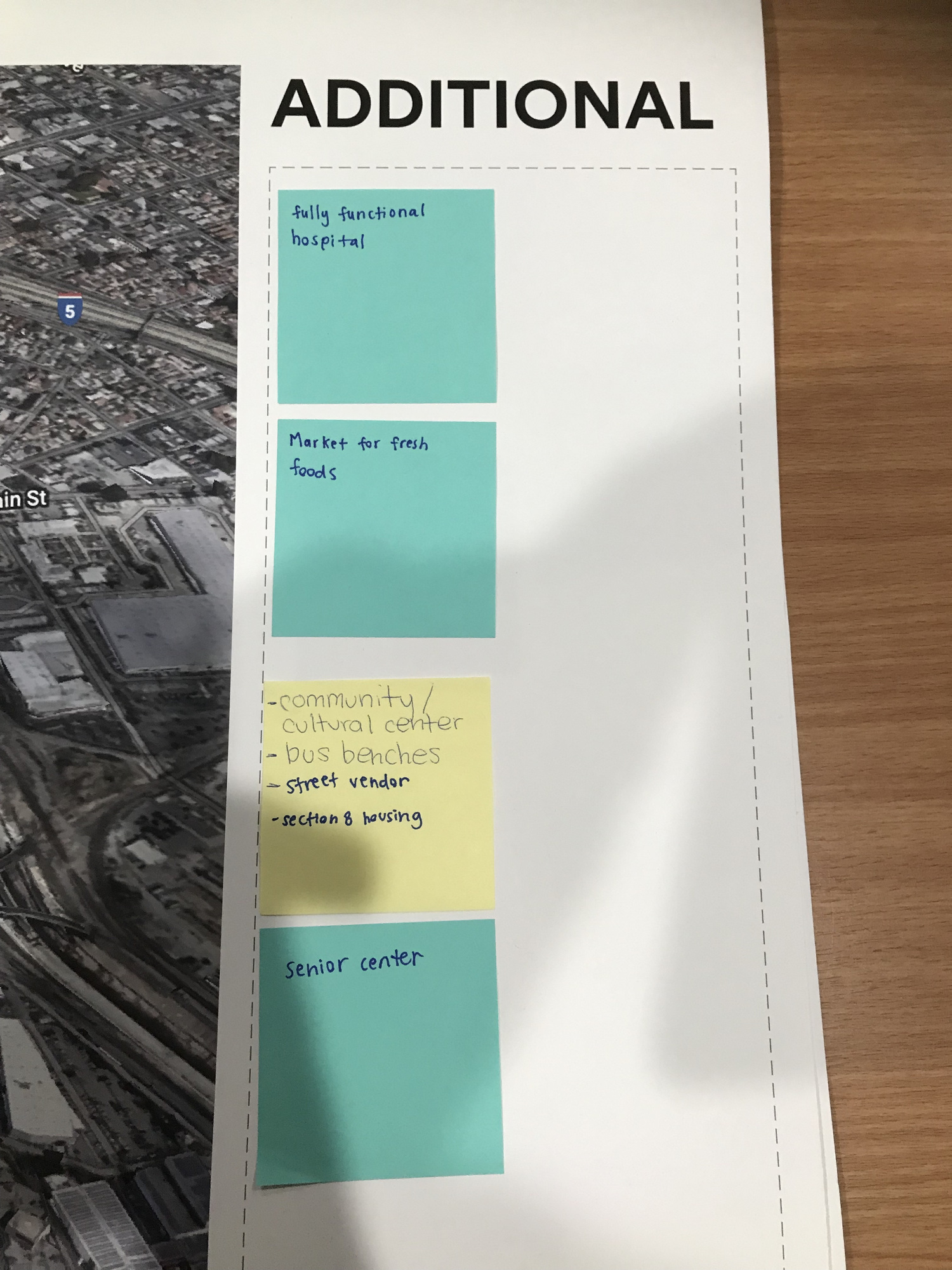PLANNAR, the continuation
As a continuation of my research, I've iterated the design of my mobile AR app PLANNAR to adhere to new spaces and stakeholders. The following two are recent engagements I’ve had with the Chinatown Sustainability Dialogue Group and the Museum of Neon Art in Glendale, CA.
Context 1: Short Visioning Workshop with CCED
Summary
Chinatown Sustainability Dialogue group was working on reaching out to different community groups in Chinatown to get their input and sponsorship of a People's Plan they had put together. Not wanting to worry about ownership of large analog papers, they asked me if I could design them a mapping AR app.
Chinatown Sustainability Dialogue group was working on reaching out to different community groups in Chinatown to get their input and sponsorship of a People's Plan they had put together. Not wanting to worry about ownership of large analog papers, they asked me if I could design them a mapping AR app.
Role
UX/UI Design
Facilitator
UX/UI Design
Facilitator
Timeline
3 days
Tools
Unity 3D
Adobe Illustrator
3 days
Tools
Unity 3D
Adobe Illustrator
Iteration
For this new context, the purpose was not to ask the community for what they wanted from scratch, but to have a pre-populated library of assets that reflected the new policies written in the People's Plan and see if there was consensus among the community.
Constraints
- Audience: CCED is comprised primarily of high school - early college students who were tenant activists and familiar with Chinatown's issues.
- Short time slot: Since these meetings ran on a tight schedule, I was given 10 minutes on the agenda to engage
- Pre-defined assets: CSDG had developed a written document with desires from the community expressed in a number of other meetings.
Agenda
I facilitated this short activity and asked members to for the first five minutes, talk amongst their group and pin down at least 5 items in certain parts of the Chinatown map, and ultimately photograph their creations. I made sure to design an activity where everyone was engaged--while one person pinned and photographed, the rest looked and pointed on the map where to place it. During this activity, I walked to each group and demonstrated how to place the pins, while also playing a looping video tutorial of how to use the app on the powerpoint slide.

Part 1: Mapping Community Desires (5 minutes)
I facilitated this short activity and asked members to for the first five minutes, talk amongst their group and pin down at least 5 items in certain parts of the Chinatown map, and ultimately photograph their creations. I made sure to design an activity where everyone was engaged--while one person pinned and photographed, the rest looked and pointed on the map where to place it. During this activity, I walked to each group and demonstrated how to place the pins, while also playing a looping video tutorial of how to use the app on the powerpoint slide.

Part 2: Feedback (5 minutes)
For the second part of the activity, I asked them to put ‘ipads down’ and write on post-it notes elements they thought were missing and place the post-it notes in the allotted “Additional” area adjacent to the map. I asked them to hold on to the post-it’s during the remainder of our presentation in case they thought of something else. Later on in the presentation, we asked them to report back on what they pinned and wrote down.

Pins I created for this workshop
Demo I displayed on the screen as participants familiarized themselves with the task


Conclusion
This exercise was surprisingly successful in terms of setting the tone for the conversation about asking for community sposorship of a community plan. The participants found the activity to be engaging and fun, and felt that it gave them a quick way to express their desires. One of the participants had tried PLANNAR app's first iteration and mentioned to me afterwards that this version "made more sense" and seemed more "actionable."
Next Steps
I was not able to continue the workshops because of scheduling conflicts, but if I were to continue this, I would create and upload 2D pins based on the post-it notes and other feedback given from the participants.


Context 2: Pop-up Exhibit @MONA
Summary
I was invited to participate in Glendale Tech Week's "Floating Signifiers" exhibit and introduce my work with PLANNAR as a pop-up at the Museum of Neon Art in Glendale, CA.
I was invited to participate in Glendale Tech Week's "Floating Signifiers" exhibit and introduce my work with PLANNAR as a pop-up at the Museum of Neon Art in Glendale, CA.
Role
Artist
Facilitator
Artist
Facilitator
Timeline
2 weeks
Tools
Unity3D
Adobe Illustrator
2 weeks
Tools
Unity3D
Adobe Illustrator
Iteration
This context was similar to the workshop I led at CCED, only that this time, there was more loose facilitation and self-initiated participation.I designed the table to have three main calls to action:
-
Pick up the iPad to place AR objects on the map
- Pick up the pens and post-it notes and place them in two sections (less of and more of)

Since I wanted to attract visitors to participate in the visioning exercise and discussion, I designed a poster explaining what the purpose of the pop-up was and used bright colorful palettes. I curated some assets to include smart city infrastructure (I had seen some article tlak about how 5G is killing birds as a contentious subject) and cubes to symbolically represent "affordable housing."
As the output of the AR maps did not have utilitarian use, I envisioned the out of the maps to be more of spatial collages and less informative/diagrammatic maps.
Constraints
- Audience: Everyday visitors to the Museum of Neon Art, participants of Glendale Tech Week of all ages and ethnicities.
- Time slot: I was given two hours to exhibit this work.
- Assets: In my initial conversations with the curators of the exhibit, I was told of existing tensions with specific developments (i.e. the cultural history and strong Armenian influence, burgeoning 'Silicon Mountains' branding
Insights
- People were generally very excited about their ability to participate in the discussion, but had expectations that this information would be spread on social media or would reach the Mayor of Glendale in some way
- People of all ages were really interested in seeing the 3D representations of their maps
- Young people understood the concept of the app better than adults, and were more willing to generate ideas
- The quick AR engagement triggered lengthly conversation about what they wish existed more and less in their community
- Interesting to see transplants refrain from participating in the exercise altogether